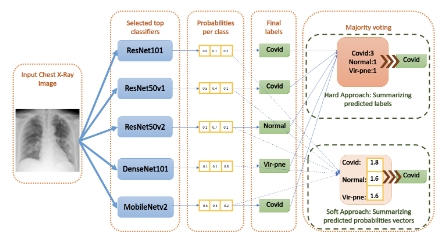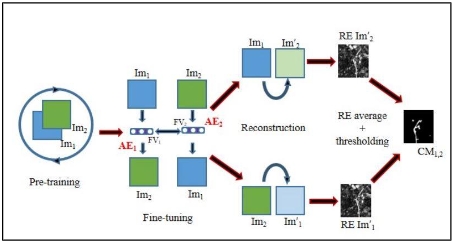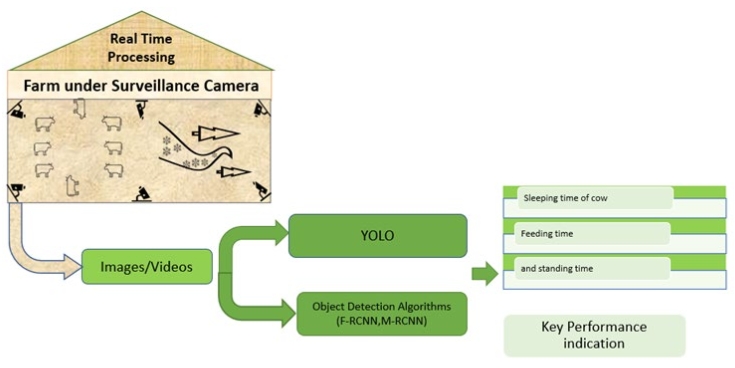Clustering data analytics of urban land use for change detection
Abstract
In this study, the author proposes and details a workflow for the spatial-temporal demarcation of urban areal features in 8 cities of Tamilnadu, India. During the inception phase, functional requirements and non-functional parameters are analyzed and designed, within a suitable pixel area and object-oriented derived paradigm. Land use categories are defined from OpenStreetMap (OSM) related works with the scope of conducting climate change, using multispectral sensors onboard Landsat series. Furthermore, we augment the bands dataset with Spatially Invariant Feature Transform (SIFT), Normalized Difference Vegetation Index (NDVI), Normalized Difference Built-Up Index (NDBI), Leaf Area Index (LAI), and Texture base indices, as a means of spatially integrating auto-covariance to stationarity patterns. In doing so, change detection can be pursuit by scaling up the segmentation of regional/zonal boundaries in a multi-dimensional environment, with the aid of Wide Area Networks (WAN) cluster computers such as the BEOWULF/Google Earth Engine clusters. GeoAnalytical measures are analyzed in the design of local and zonal spatial models (GRID, RASTER, DEM, IMAGE COLLECTION). Finally, multi variate geostatistical works are ensued for precision and recall in predictive data analytics. The author proposes reusing machine learning tools (filtering by attribute-based indexing in PaaS clouds) for pattern recognition and visualization of features and feature collection.
References
[1]Shan J, Sampath A. Urban Terrain and Building Extraction from Airborne LIDAR Data. CRC Press; 2006.
[2]Sampath A, Shan J. Segmentation and Reconstruction of Polyhedral Building Roofs From Aerial Lidar Point Clouds. IEEE Transactions on Geoscience and Remote Sensing. 2010; 48(3): 1554-1567. doi: 10.1109/tgrs.2009.2030180
[3]Awrangjeb M, Fraser C. Automatic Segmentation of Raw LIDAR Data for Extraction of Building Roofs. Remote Sensing. 2014; 6(5): 3716-3751. doi: 10.3390/rs6053716
[4]Caihua Y, Yonghong L, Weijun Q, et al. Application of Urban Thermal Environment Monitoring Based on Remote Sensing in Beijing. Procedia Environmental Sciences. 2011; 11: 1424-1433. doi: 10.1016/j.proenv.2011.12.214
[5]Sohn G, Dowman I. Data fusion of high-resolution satellite imagery and LiDAR data for automatic building extraction. ISPRS Journal of Photogrammetry and Remote Sensing. 2007; 62(1): 43-63. doi: 10.1016/j.isprsjprs.2007.01.001
[6]Zhou H, Jiang H, Zhou G, et al. Monitoring the change of urban wetland using high spatial resolution remote sensing data. International Journal of Remote Sensing. 2010; 31(7): 1717-1731. doi: 10.1080/01431160902926608
[7]Tsagkatakis G, Aidini A, Fotiadou K, et al. Survey of Deep-Learning Approaches for Remote Sensing Observation Enhancement. Sensors. 2019; 19(18): 3929. doi: 10.3390/s19183929
[8]Lu X, Yuan Y, Zheng X. Joint Dictionary Learning for Multispectral Change Detection. IEEE Transactions on Cybernetics. 2017; 47(4): 884-897. doi: 10.1109/tcyb.2016.2531179
[9]Sublime J, Kalinicheva E. Automatic Post-Disaster Damage Mapping Using Deep-Learning Techniques for Change Detection: Case Study of the Tohoku Tsunami. Remote Sensing. 2019; 11(9): 1123. doi: 10.3390/rs11091123
[10]Schäfer M, Kröger M. Joint problem framing in sustainable land use research. Land Use Policy. 2016; 57: 526-539. doi: 10.1016/j.landusepol.2016.06.013
[11]Tibau XA, Reimers C, Eyring V, et al. Spatiotemporal model for benchmarking causal discovery algorithms. Published online March 23, 2020. Doi: 10.5194/egusphere-egu2020-9604
[12]Bengio Y, Deleu T, Rahaman N, et al. A Meta-Transfer Objective for Learning to Disentangle Causal Mechanisms. ArXiv. 2019; arXiv:1901.10912v2.
[13]Wang J, Biljecki F. Unsupervised machine learning in urban studies: A systematic review of applications. Cities. 2022; 129: 103925. doi: 10.1016/j.cities.2022.103925
[14]Ester M, Kriegel HP, Sander J, Xu X. A density-based algorithm for discovering clusters in large spatial databases with noise. KDD. 1996; 96(34): 226-231.
[15]Donahue J, Hendricks LA, Guadarrama S, et al. Long-term recurrent convolutional networks for visual recognition and description. In: Proceedings of the 2015 IEEE Conference on Computer Vision and Pattern Recognition (CVPR).
Copyright (c) 2024 C. Rajabhushanam

This work is licensed under a Creative Commons Attribution 4.0 International License.










